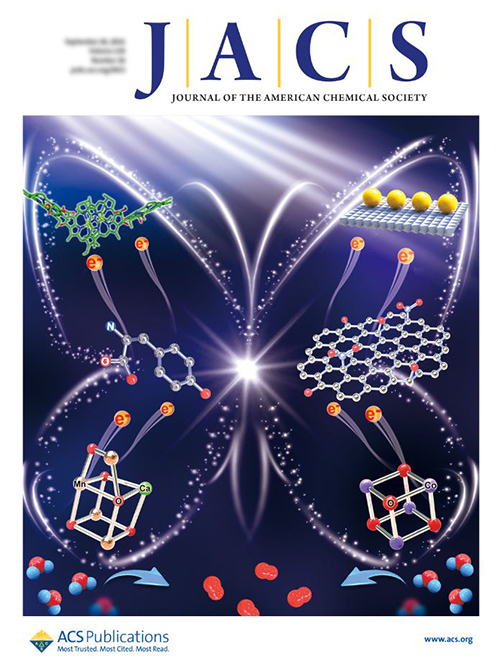A research term led by Prof. LI Can constructed a highly efficient artificial photosynthesis system by mimicking natural photosynthesis. This biomimetic strategy opens up new ways for the rational design and the assembly of highly efficient artificial photosynthesis systems for solar to fuel conversion. This work was published in the Journal of the American Chemical Society and was invited as the cover paper.

Mimicking the Key Functions of Photosystem II in Artificial Photosynthesis for Photoelectrocatalytic Water Splitting. (Image by YE Sheng)
Researchers assembled a photoelectrocatalytic system by mimicking the functions of photosystem II (PSII). In this system, BiVO4 semiconductor was used as a light-harvester protected with a layered double hydroxide (NiFeLDH) as a hole storage layer (Angew. Chem. Int. Ed., Energy Environ. Sci.). A partially oxidized graphene (pGO) was considered as biomimetic tyrosine for charge transfer, and molecular Co cubane was considered as oxygen evolution complex.
The integrated system exhibited an unprecedentedly low onset potential (0.17 V) and a high photocurrent (4.45 mA cm-2), with a 2.0% solar to hydrogen efficiency. Spectroscopic studies revealed that this PEC system exhibits superiority in charge separation and transfer, benefiting from mimicking the key functions of PSII.
In their previous work, researchers reported a hybrid system composed of semiconductors and molecular catalysts for photocatalysis (J. Catal., J. Am. Chem. Soc.). This work further paved the way for photoelectrocatalytic water splitting.
The above work was financially supported by 973 National Basic Research Program of the Ministry of Science and Technology of China, the National Natural Science Foundation of China and the Collaborative Innovation Center of Chemistry for Energy Materials (iChEM). (Text by YE Sheng)